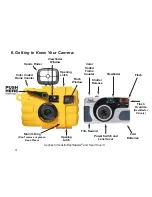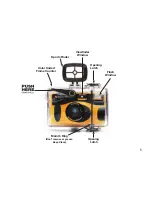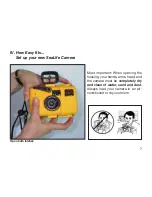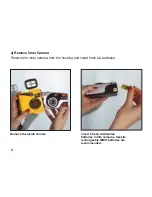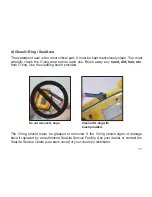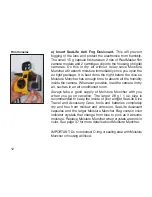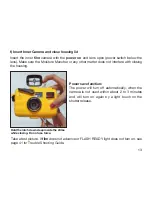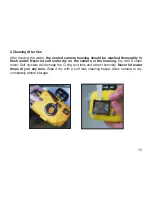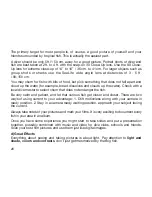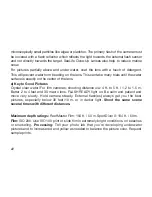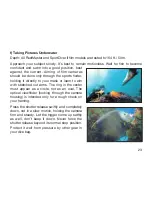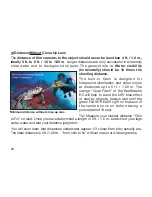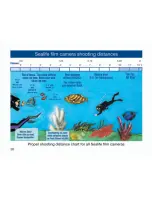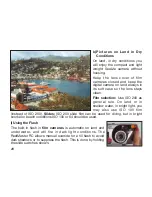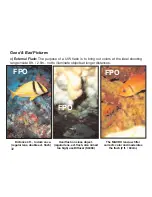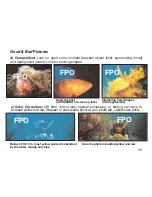
18
V. Tips for Great Pictures
a) Just Do It!
One of the best ways to learn about underwater photography is to just do it and learn
from your best shots and from mistakes. Even the best photographers have taken
countless bad pictures… that’s the way they became better and better. Here is the trick:
Just shoot anything in front of your lens in a variety of conditions, distances, colors,
objects etc. Then look at every picture and take a note of what’s good or bad about the
shot. We evaluated several thousand pictures and found that even amateurs can take
great pictures by simply avoiding a few common mistakes. (For the most common errors
see the picture examples on pages 30-33). You will be surprised that among your
snapshots you will find some award-winning pictures. Put the good ones in an album.
But keep one bad shot of each typical error. After a while you will achieve good control
and even perfection.
The best pictures are taken with a close-up lens which also acts as an underwater filter.
The SeaLife 3X Close-Up Lens has a distance range from 2ft. - 4 ft/60 - 120 cm. In lower
water visibility, the SeaLife Close-Up Lens is a must. The key to good pictures is to get
close. The reason is that water absorbs more light than air. In air you could see up to 30
miles, in water your eyes can see 100 ft., at most, but a camera can see less than half of
that and much less red and yellow than your eyes.
b) Capture the Magic
What do you want to capture on film? What attracts you to underwater photography?
What scenes are so breathtaking that people say “this is so unbelievable, I wish I had a
camera to show this to my friends”?
You will encounter strange creatures, see incredible effects of light and colors, explore
Содержание SportDiver
Страница 28: ......
Страница 47: ...Pioneer Research 97 Foster Rd Moorestown NJ 08057 Rev 11 04 Copyright 1997 2002 2004 ...

